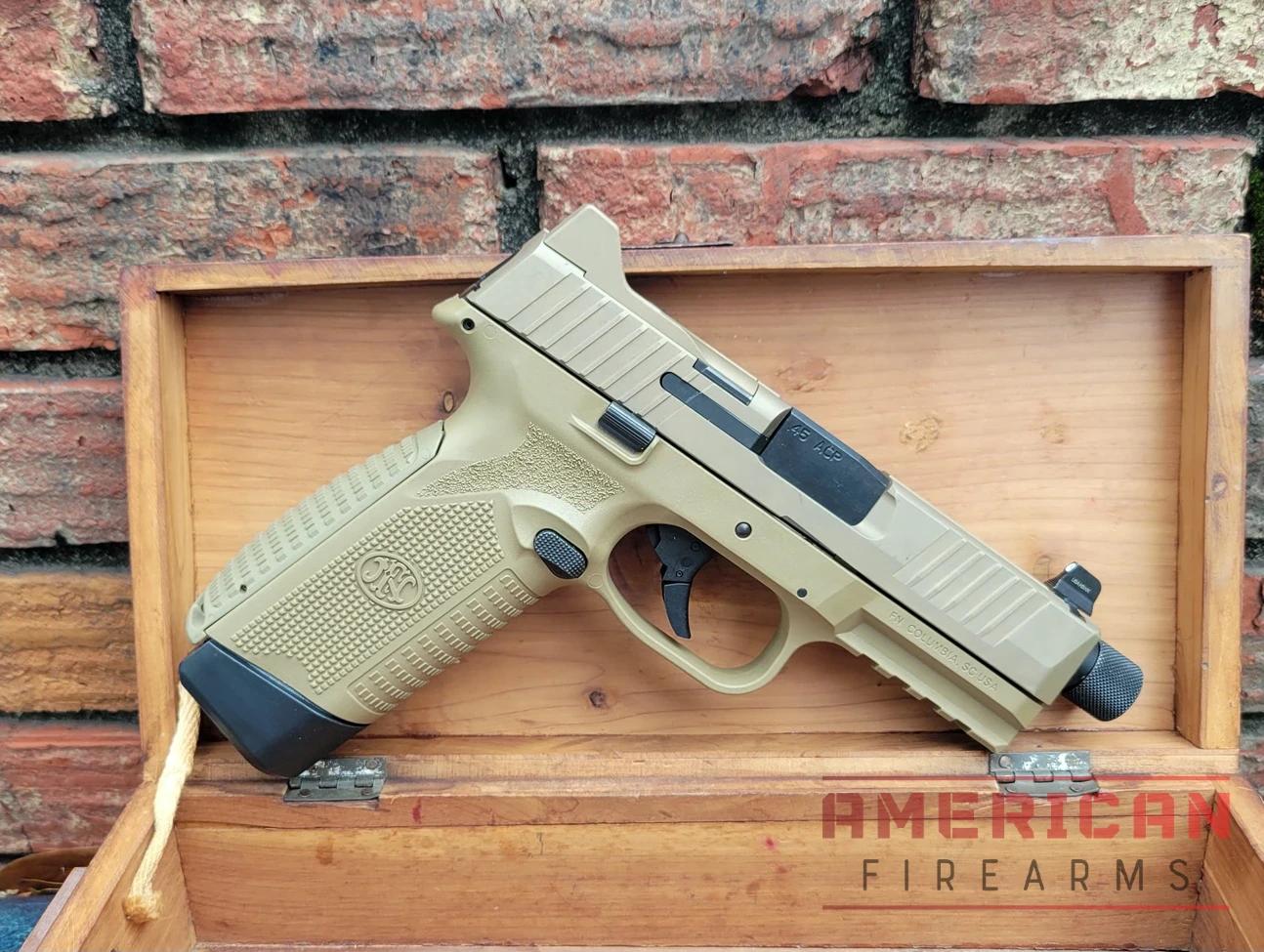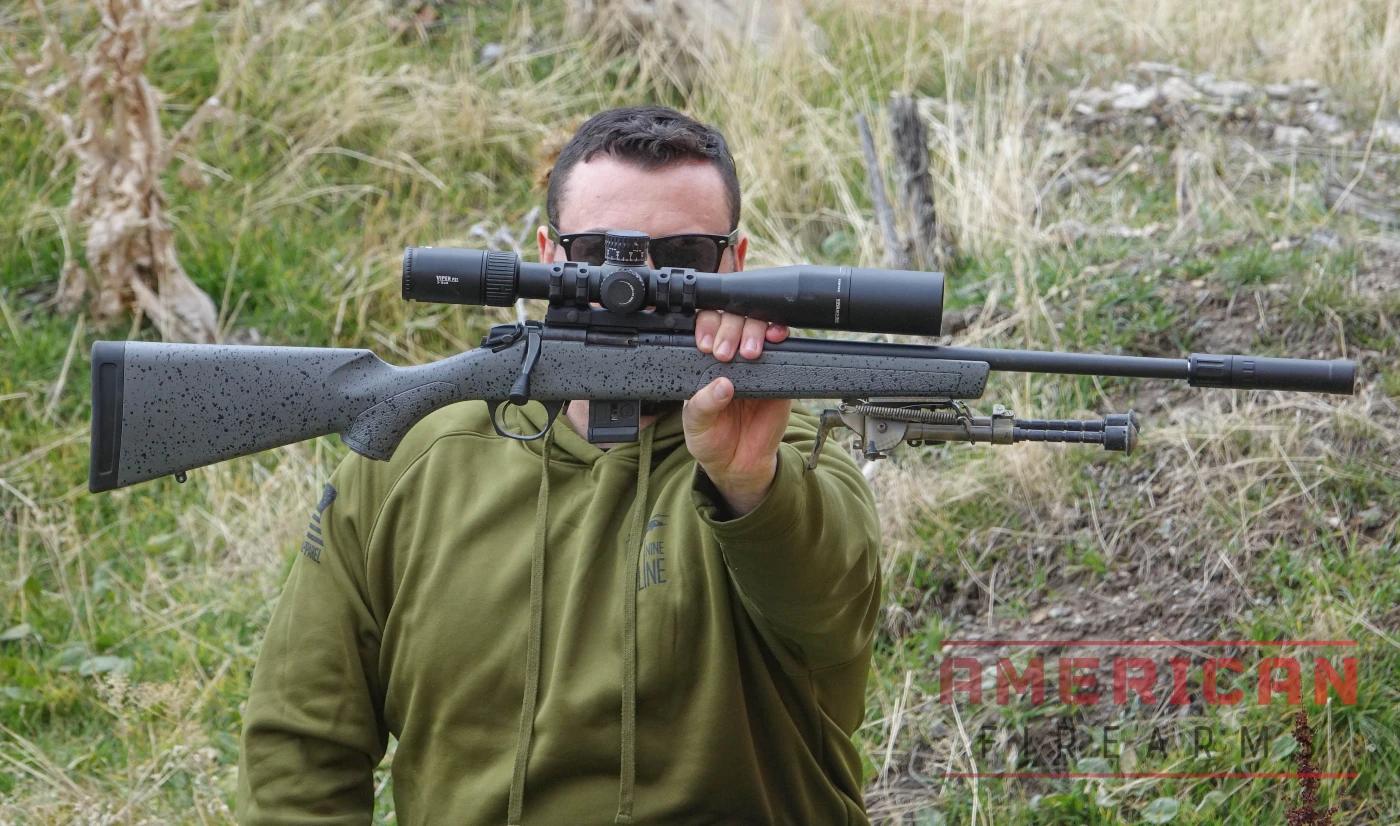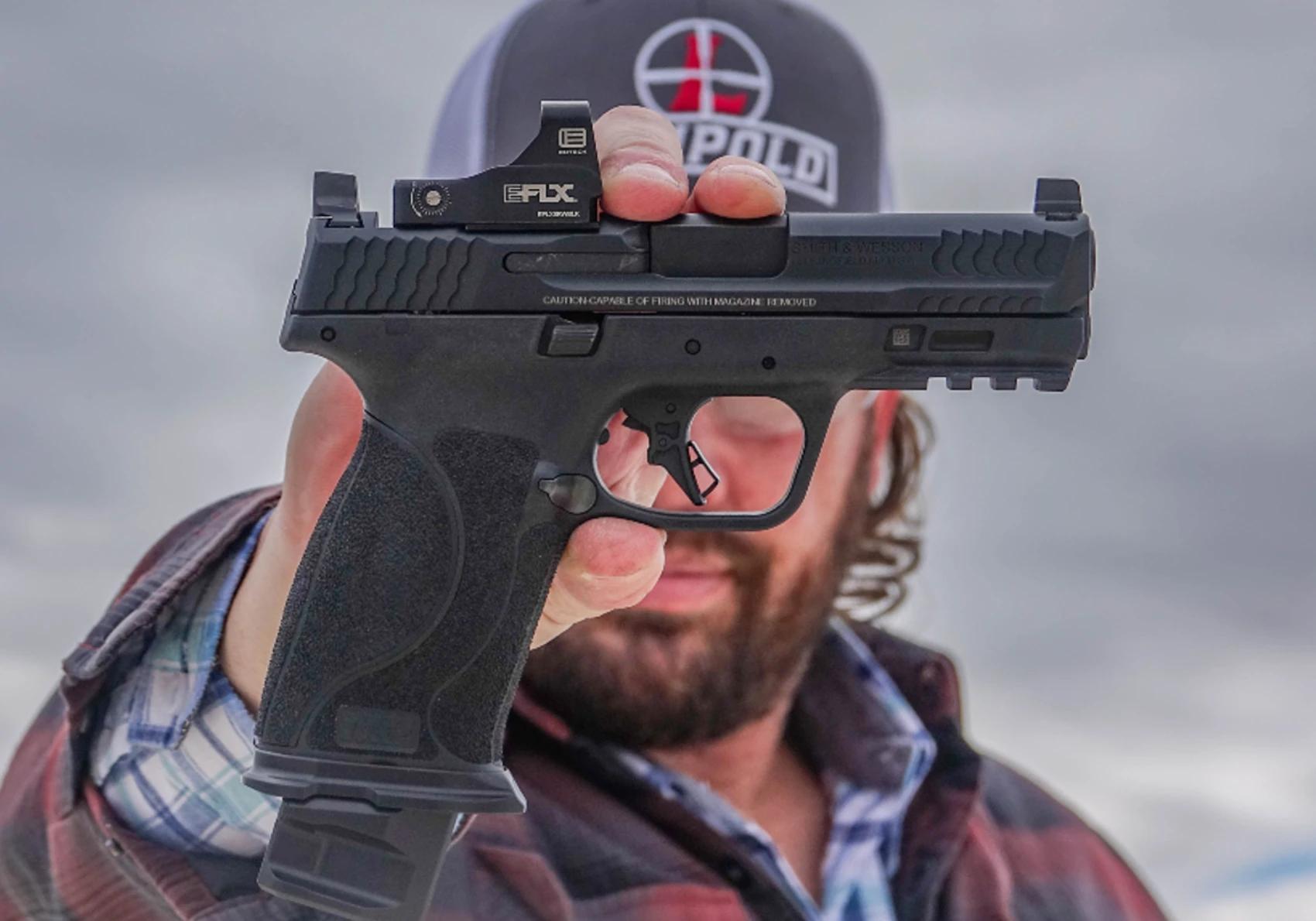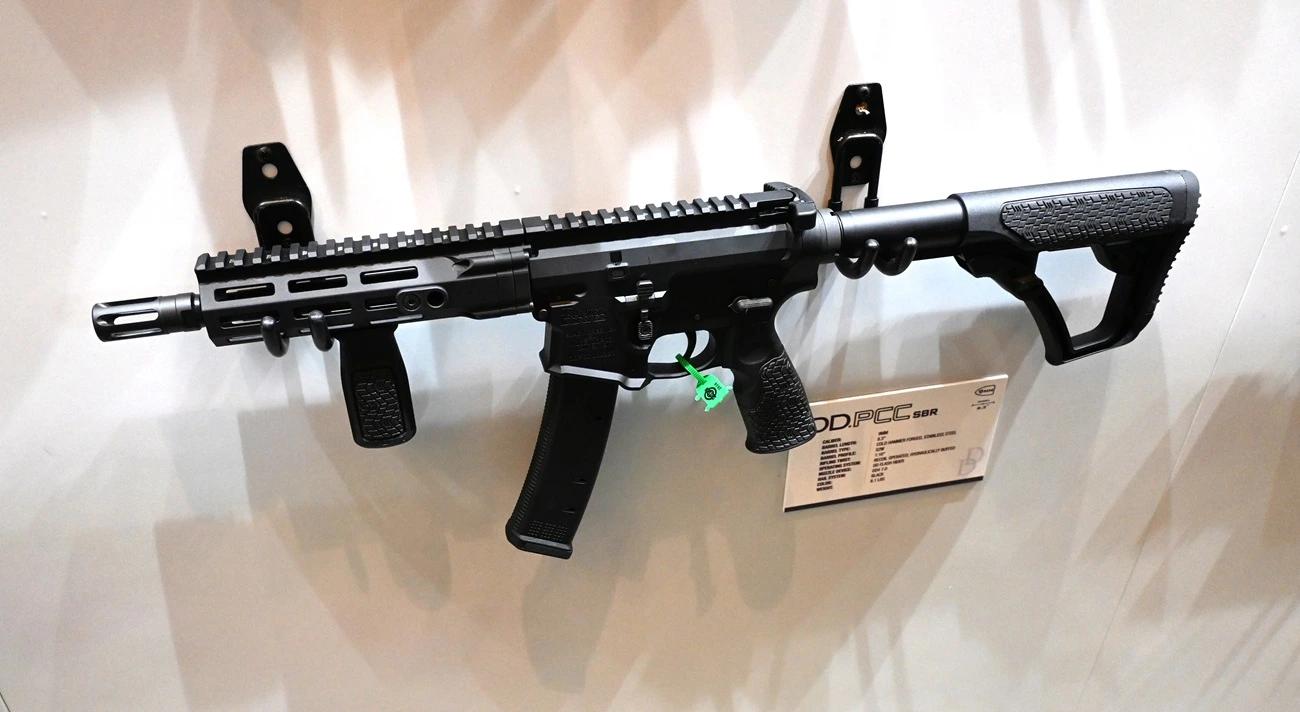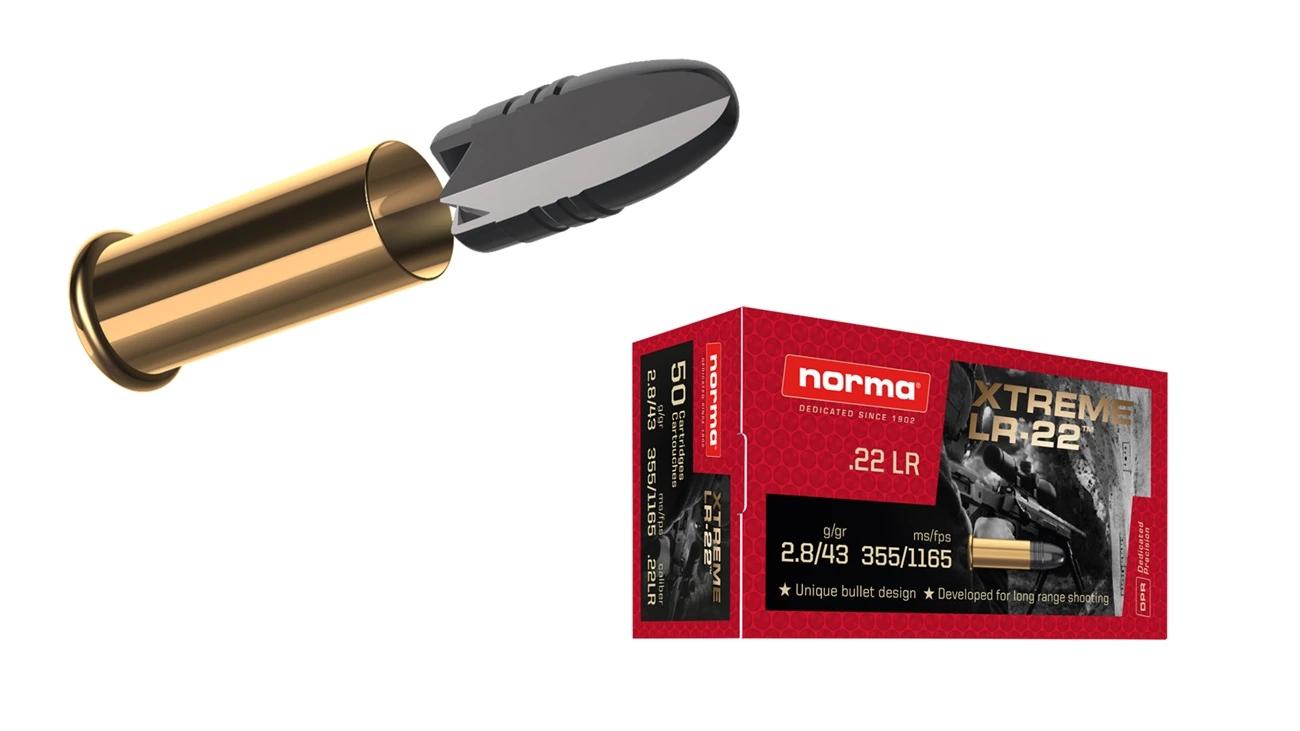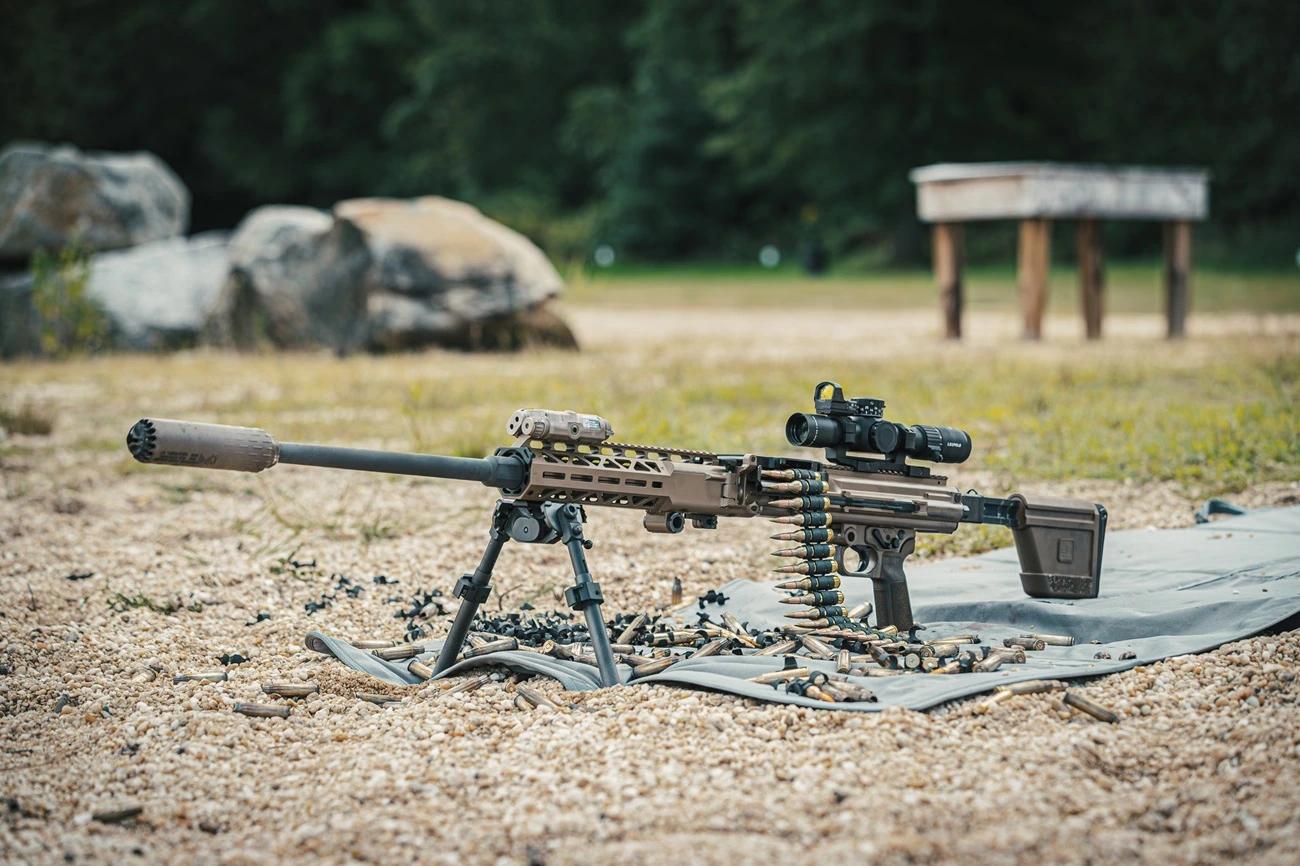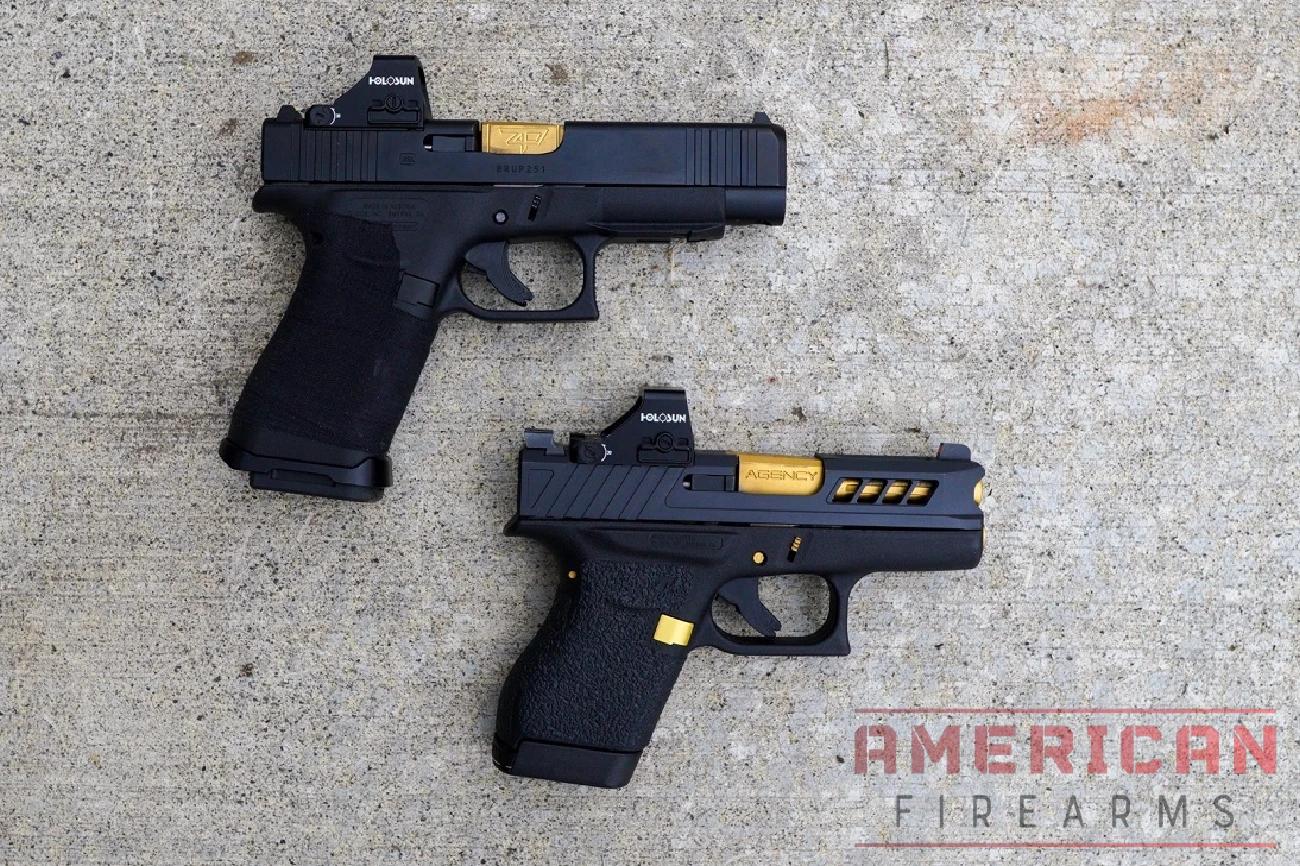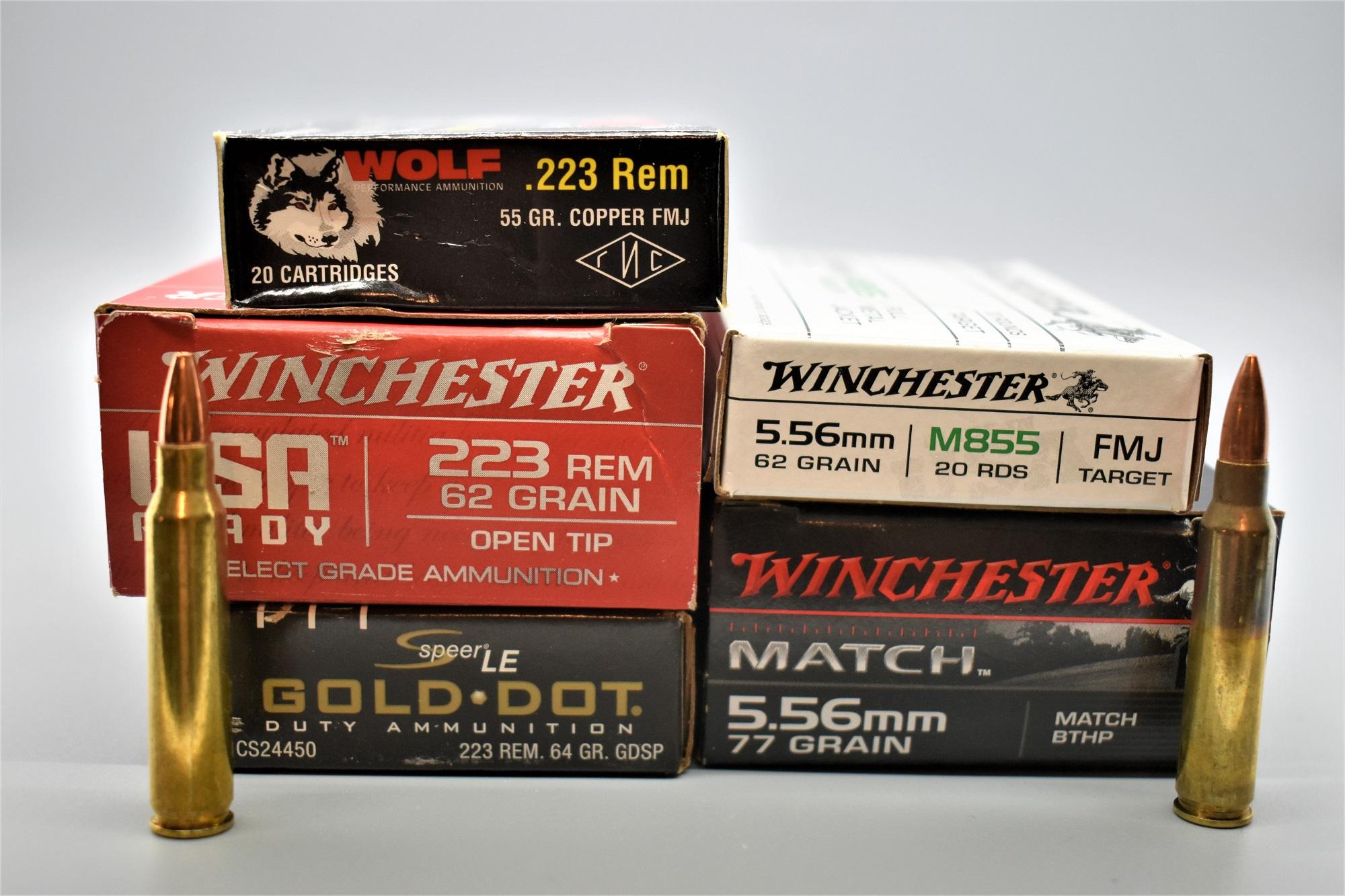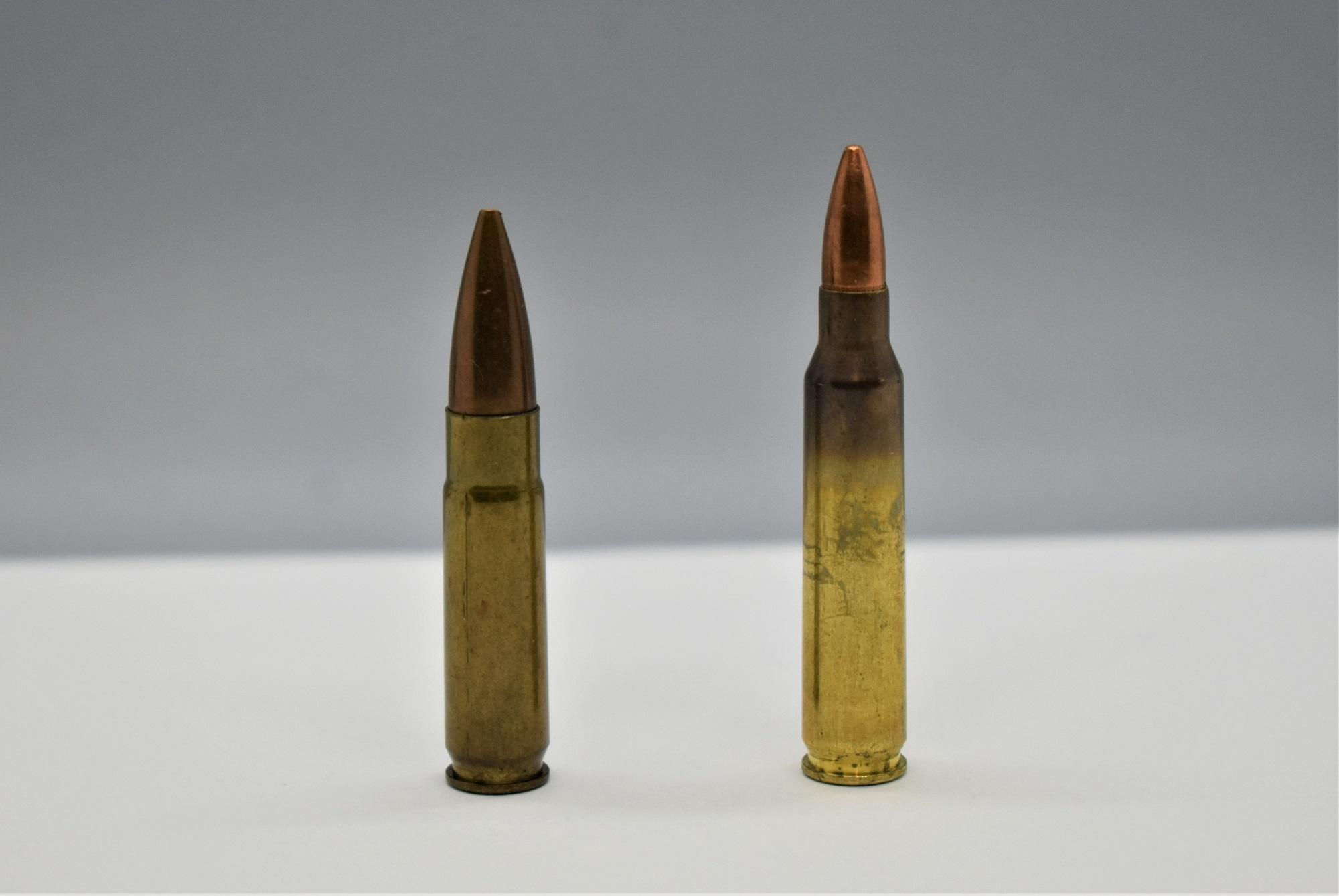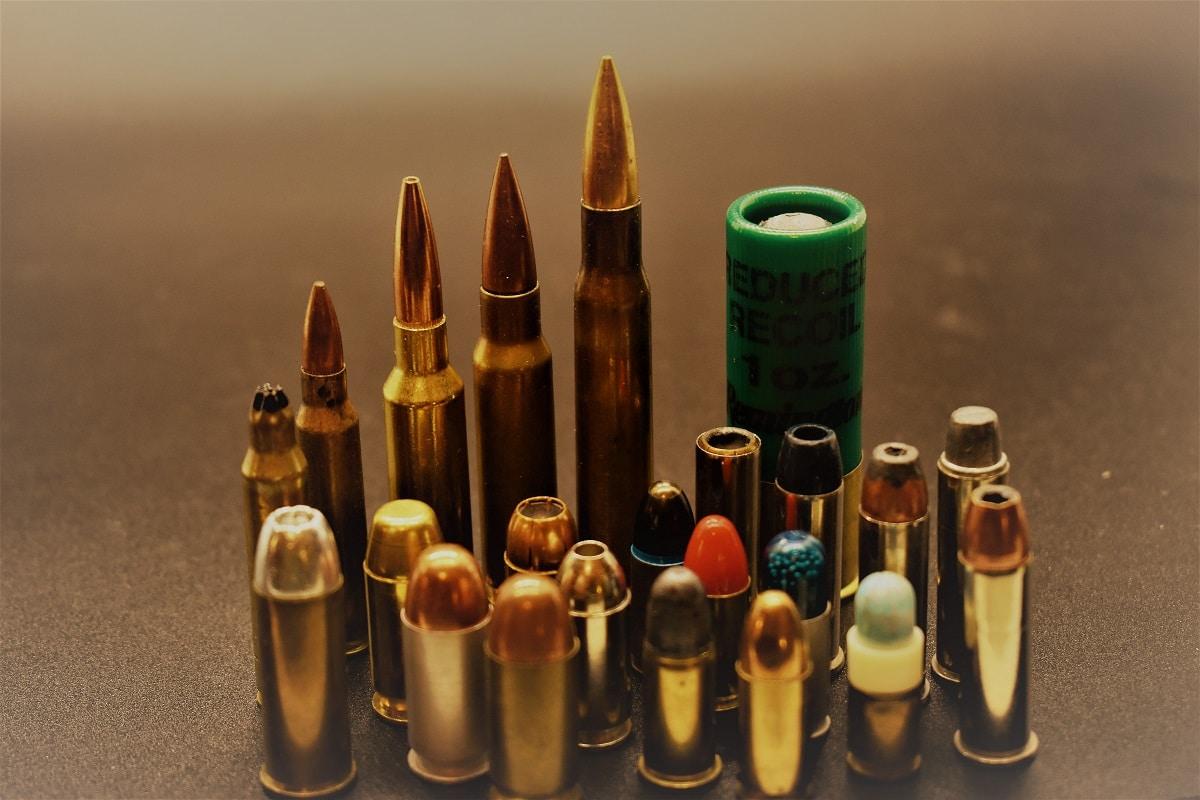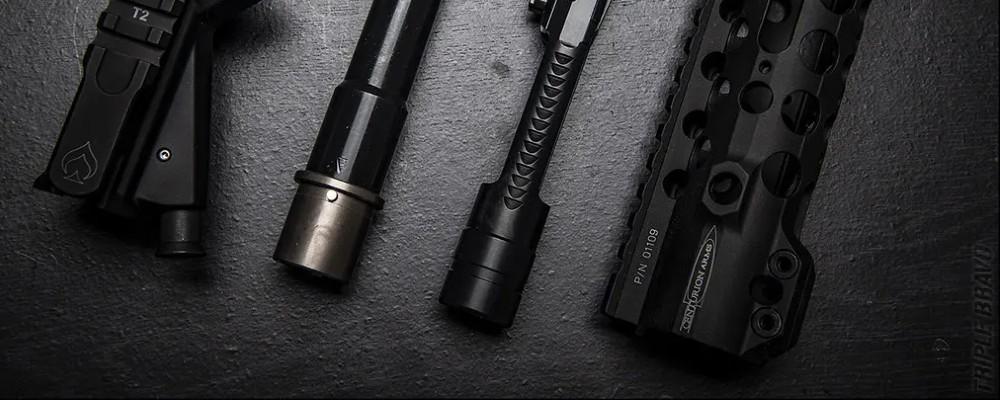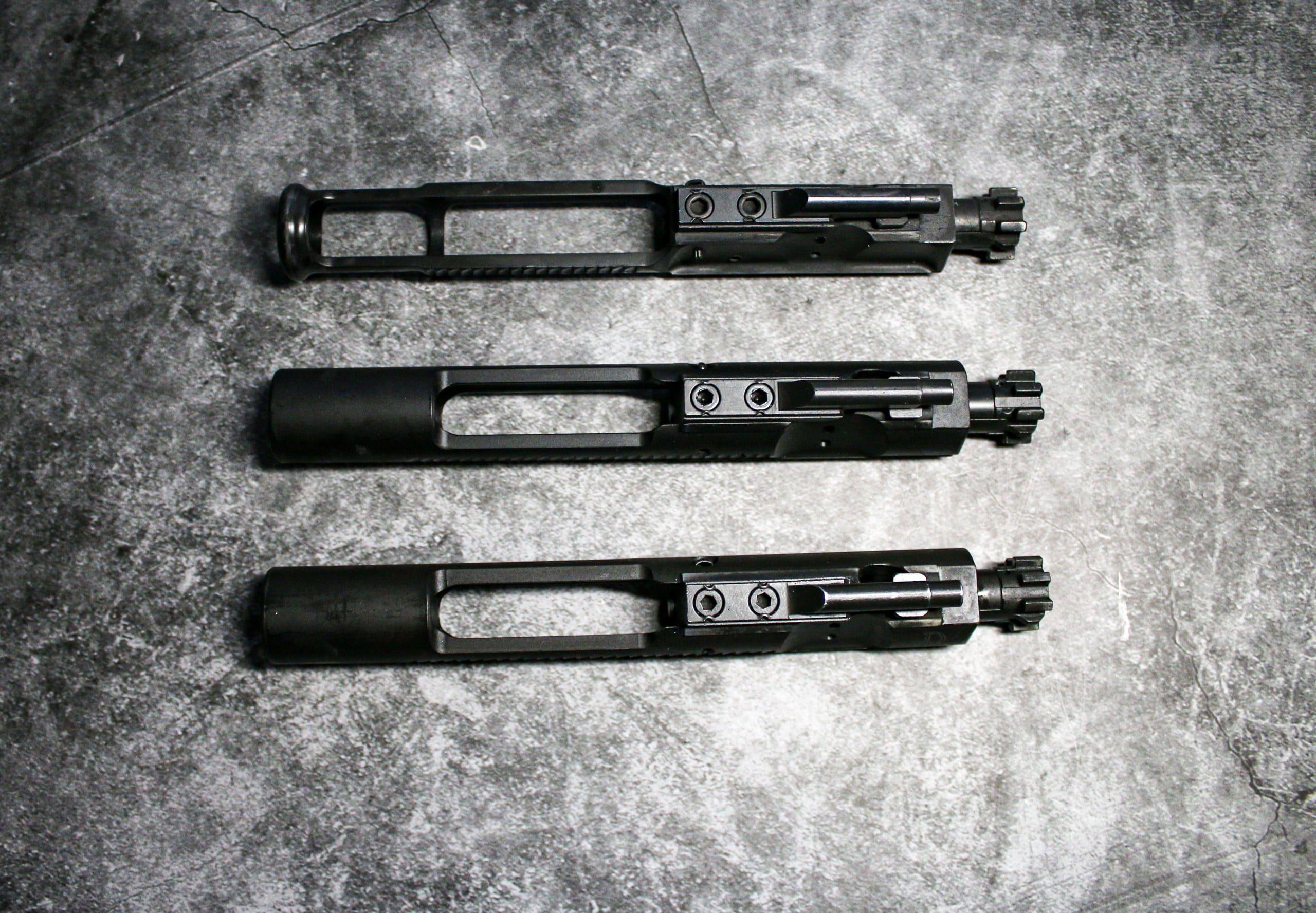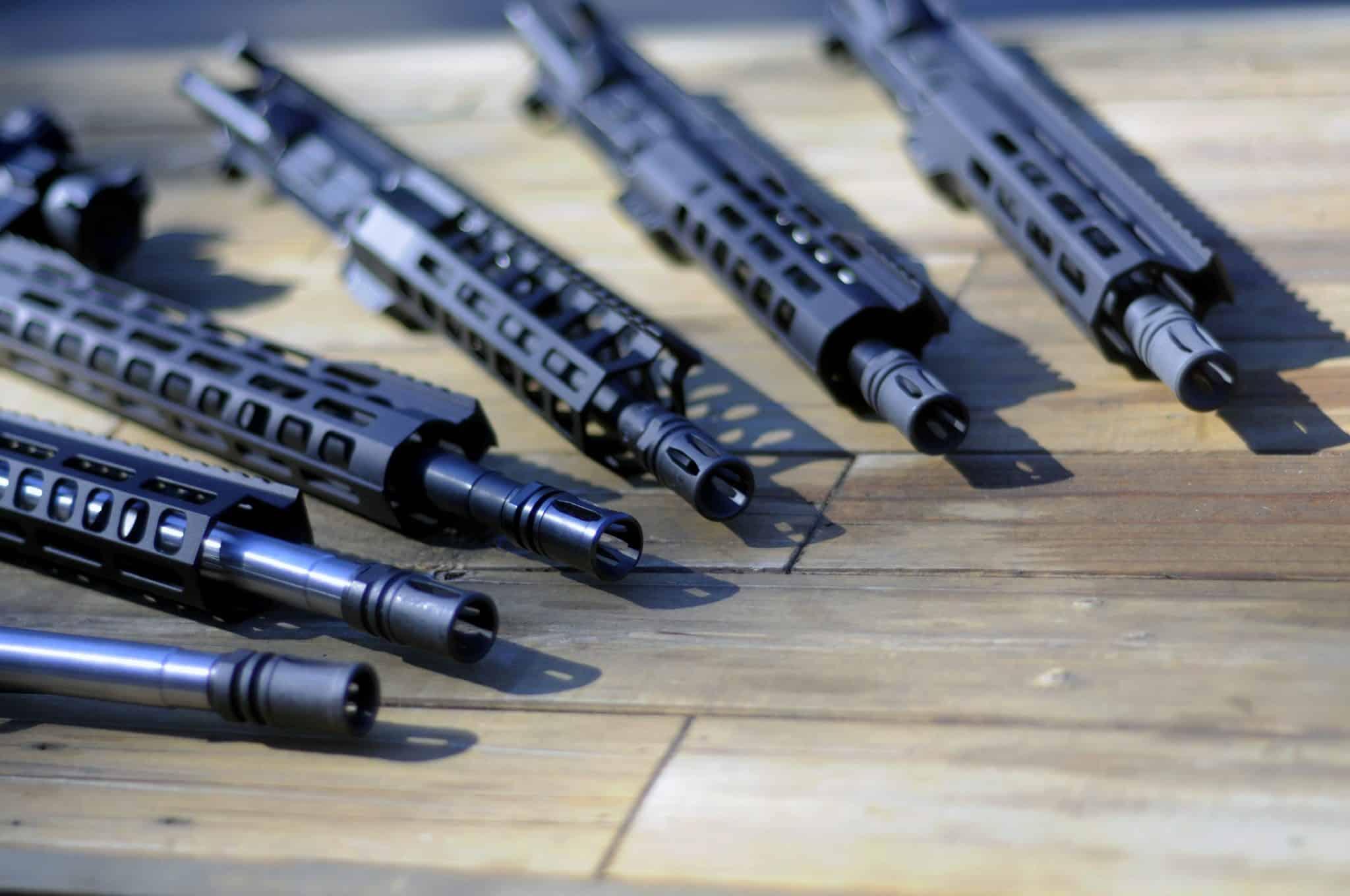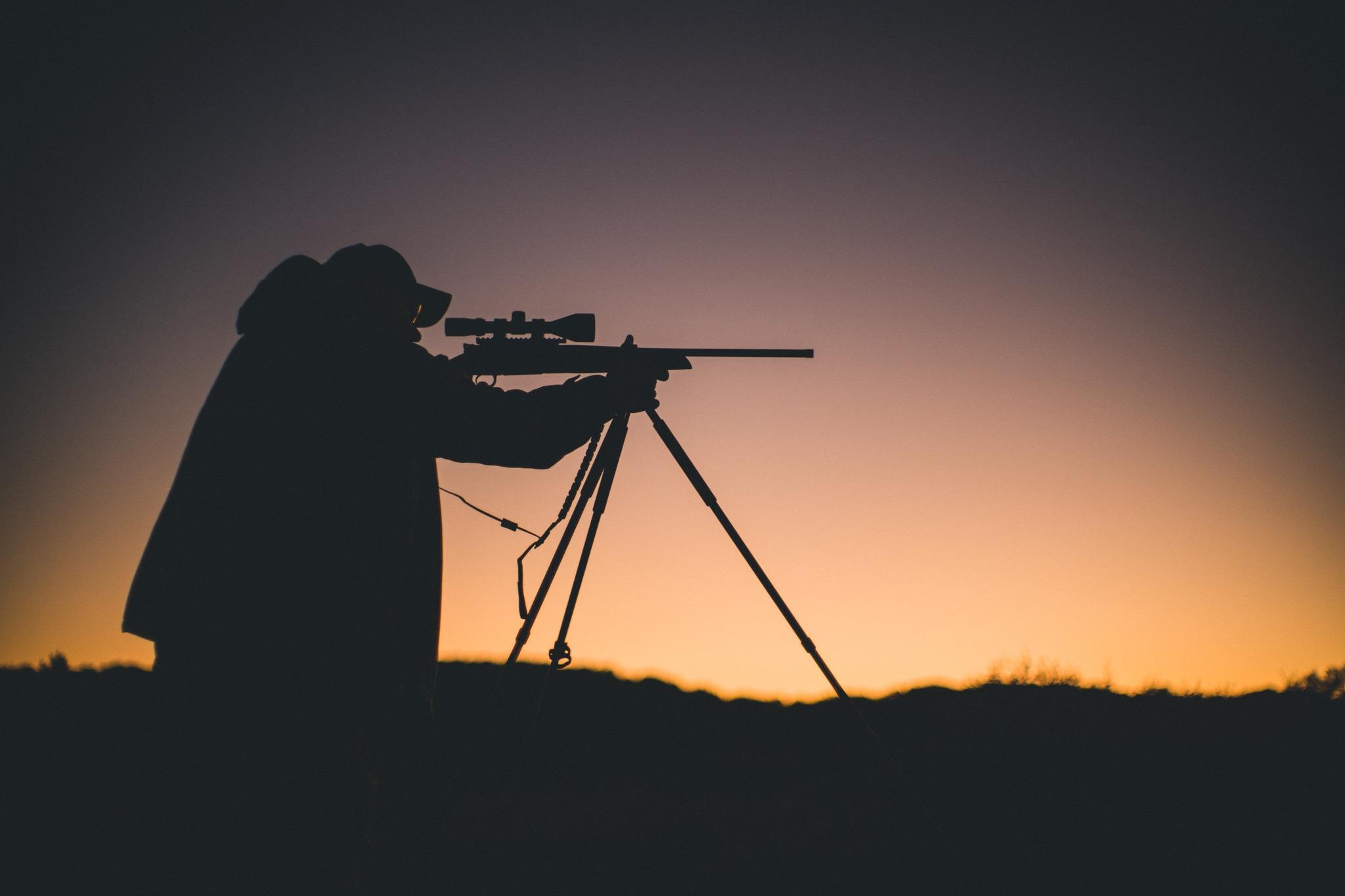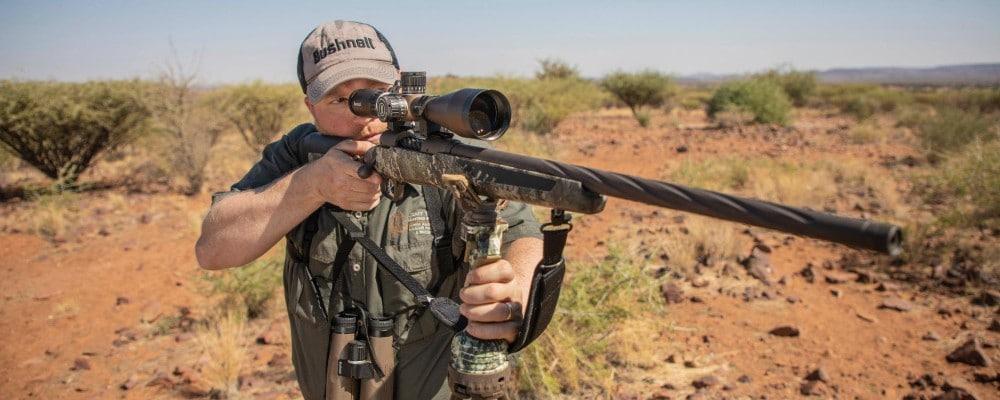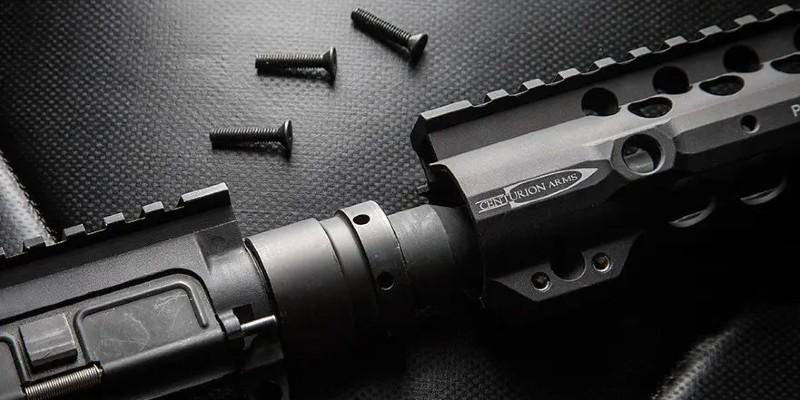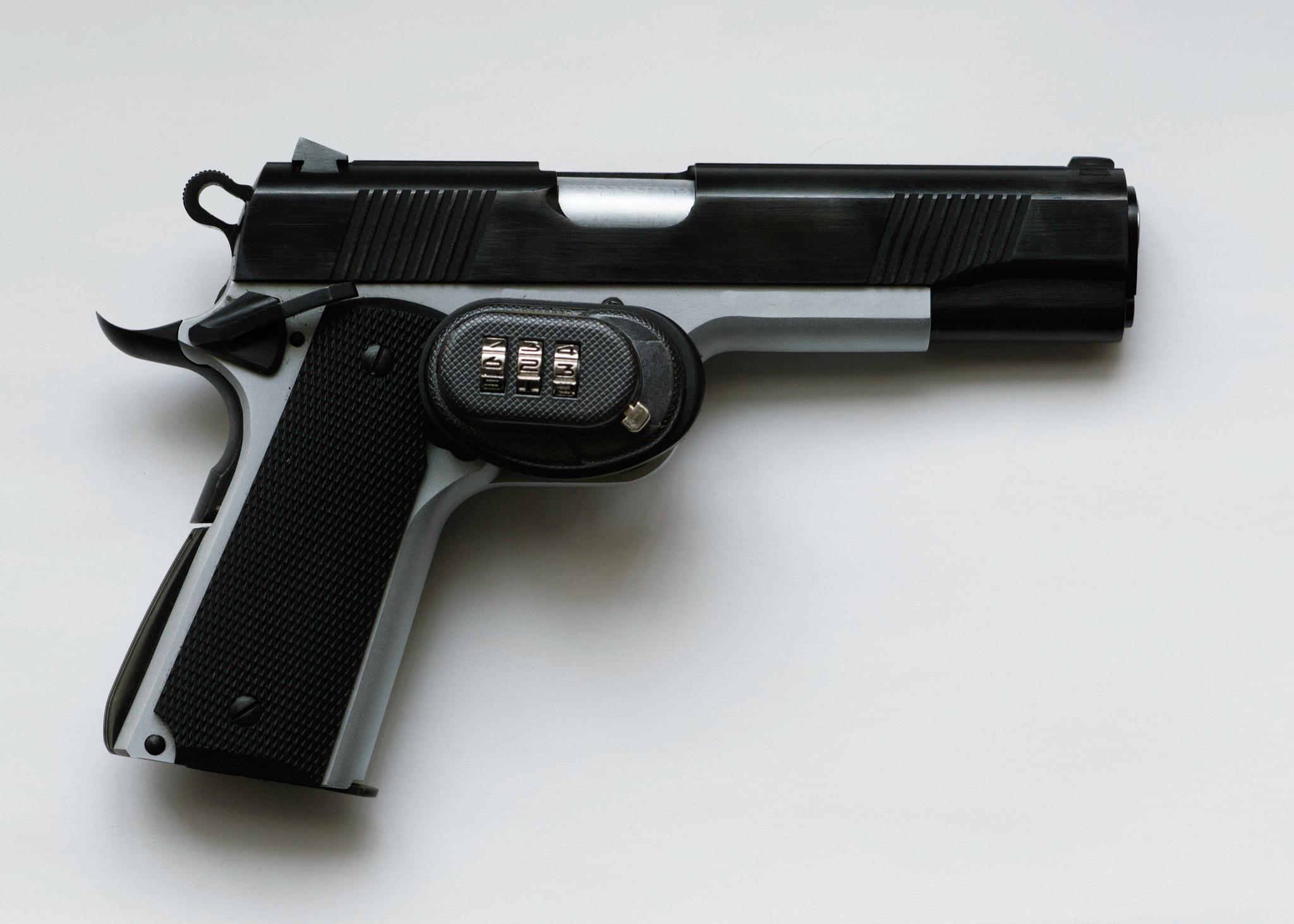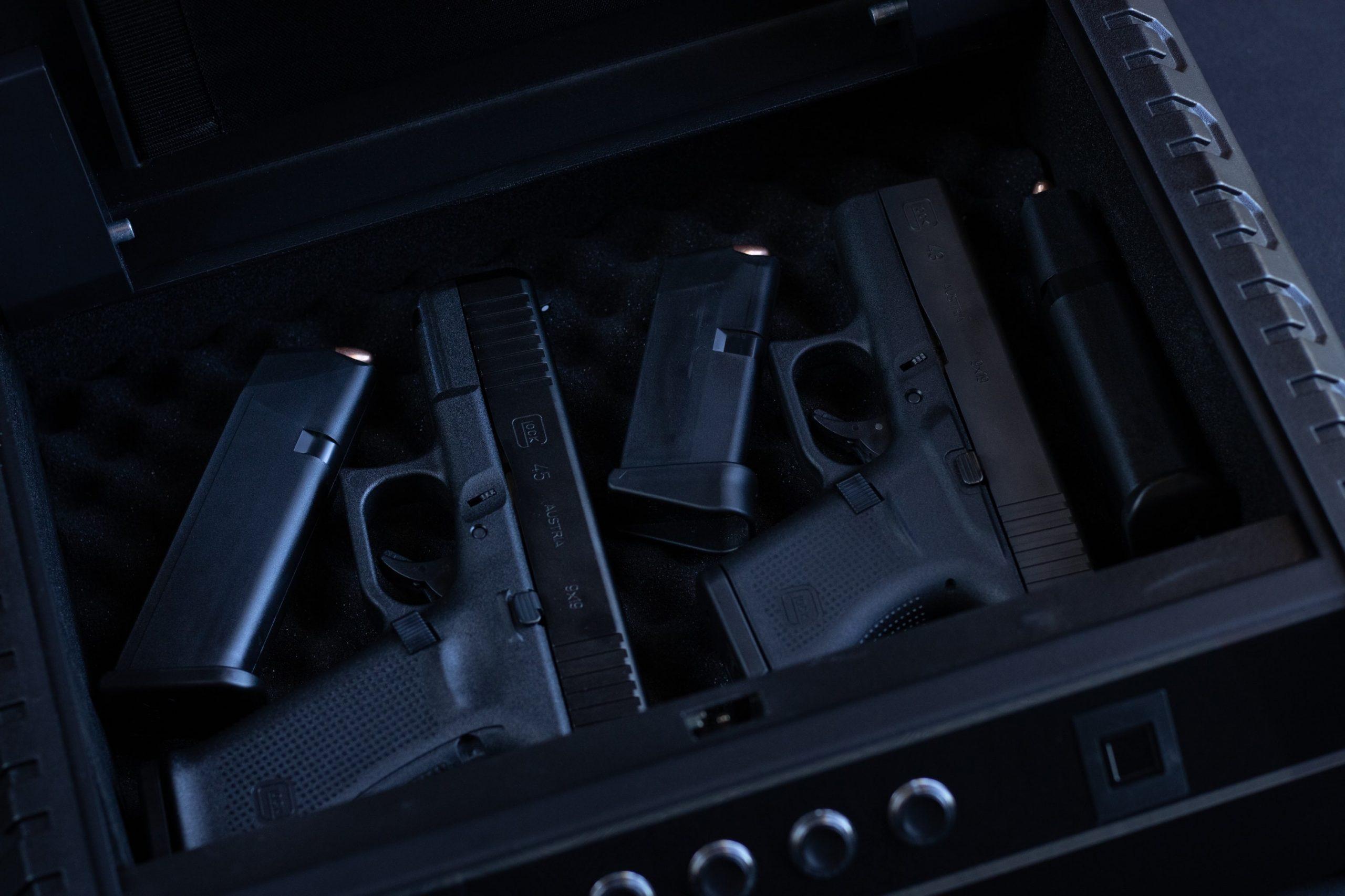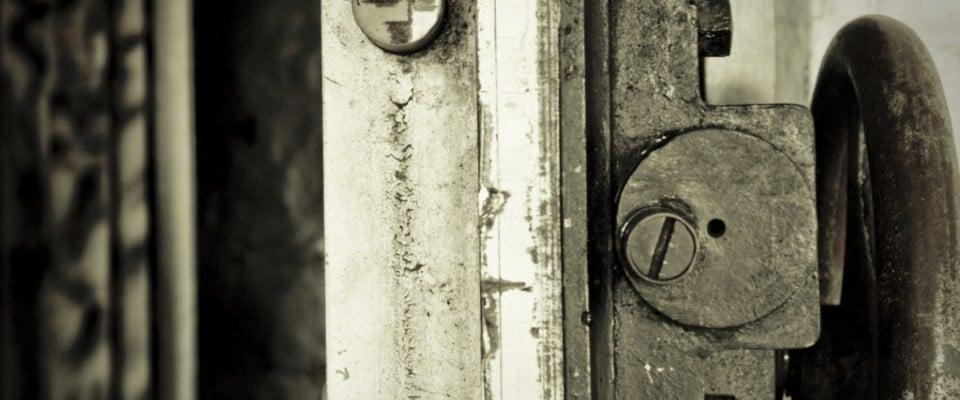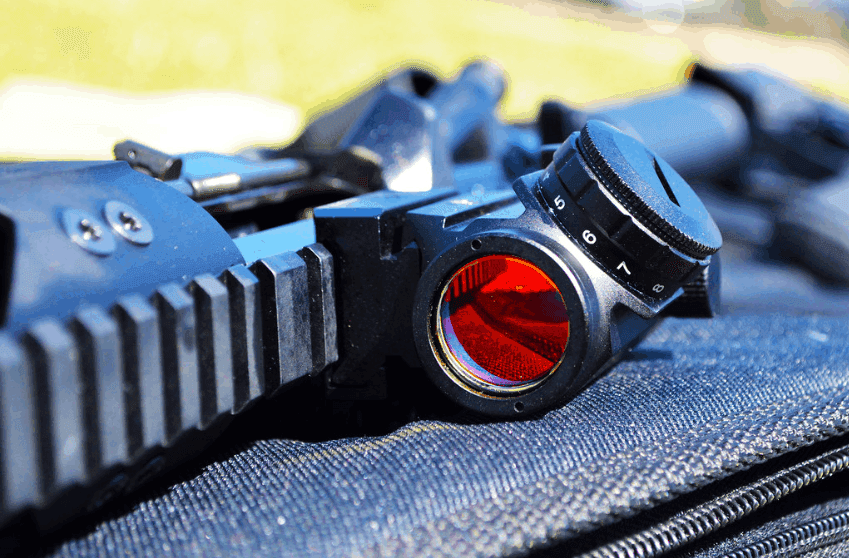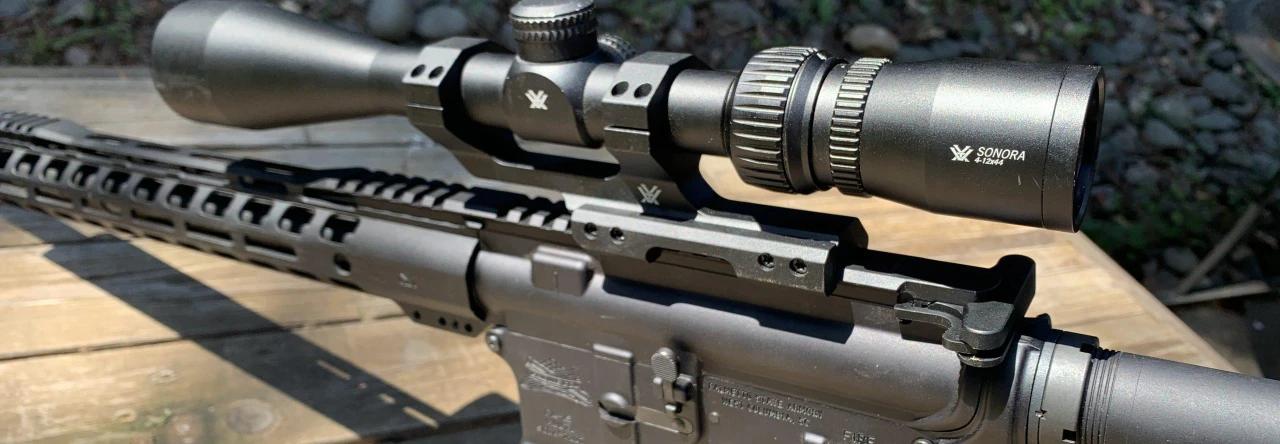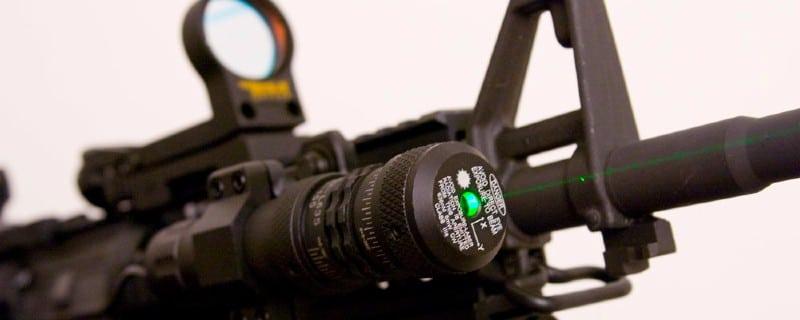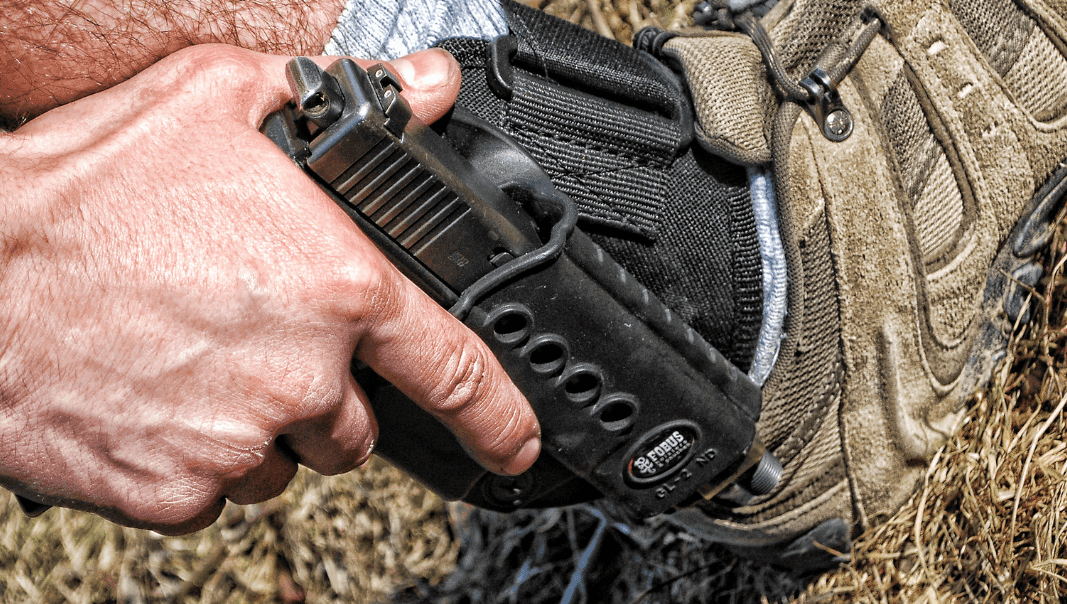What is a gun & how do they work?
Written By
Michael Crites
Licensed Concealed Carry Holder
Reviewed by
Editorial Team
Learn About The Editorial Team
Share:
Products are selected by our editors. We may earn a commission on purchases from a link. How we select gear.
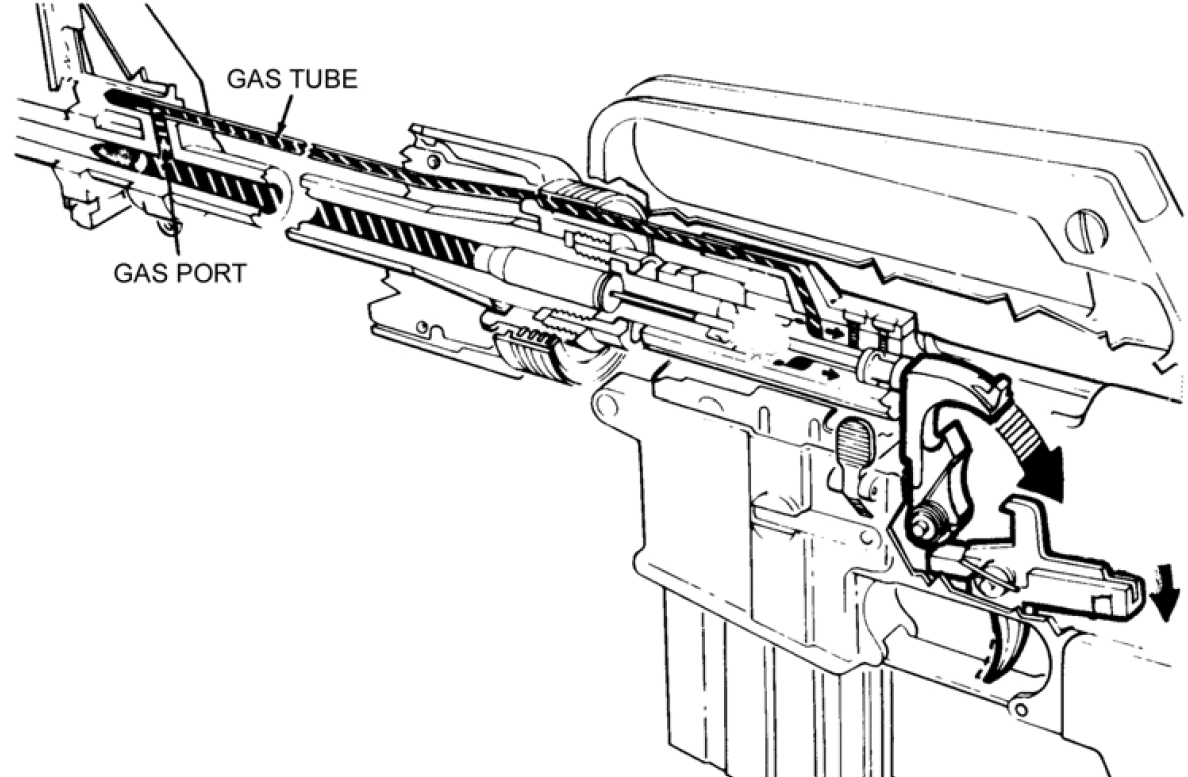
Updated
Jan 2023
In This Article
Firearm Components
A firearm is a mechanical device that uses pressure from a burning powder or an explosive charge to force a projectile through and out of a metal tube; a weapon, especially a pistol or rifle, capable of firing a projectile and using an explosive charge as a propellant.
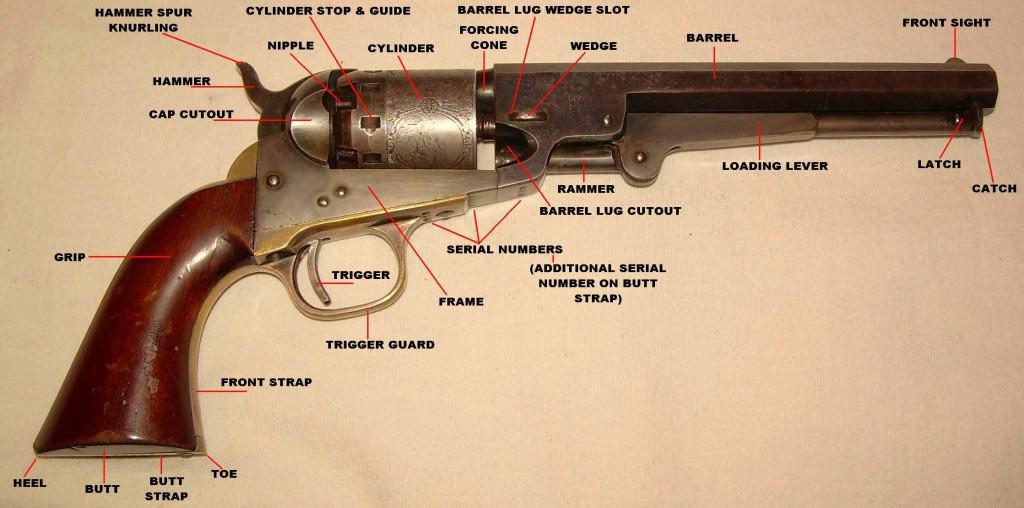
Basic Parts of a Firearm
Although firearms have changed in design a great deal since they were first invented, the components and the terms used for their parts have changed very little. All modern firearms have three basic groups of parts.
- Action: The action is the heart of the firearm-the moving parts that load, fire, and eject the shells or cartridges. Several types of actions are used in modern firearms. Muzzleloaders have locks, consisting of the hammer (cock) and a flash plate that held powder, instead of actions.
- Stock: The stock serves as the handle or support of the firearm. It can be composed of one or two pieces and is usually made of wood or a synthetic material.
- Barrel: The barrel is the metal tube that the projectile travels through (bullets travel through the barrels of rifles and handguns; shot travels through the barrel of shotguns).
What is Ammunition?
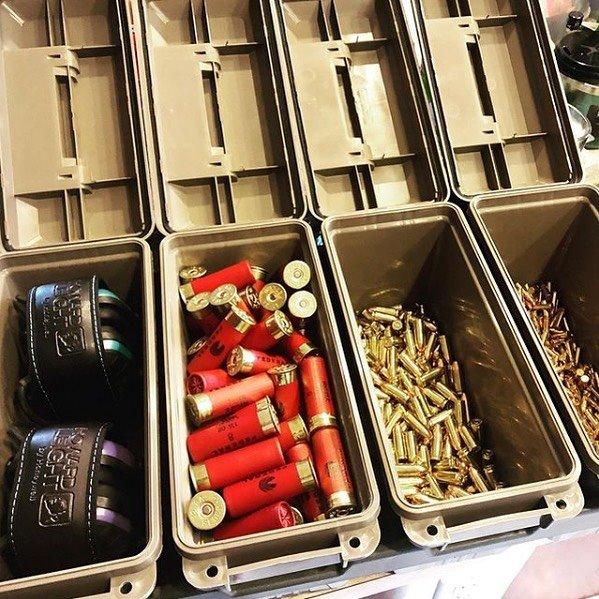
Modern ammunition varies depending on the type of firearm. Rifles and handguns use a cartridge containing a single projectile (bullet). Shotguns use a shot-shell containing either a single slug or a large number of small projectiles (shot). However, the basic components of cartridges and shot-shells are very similar.
Cartridge: Ammunition used in modern rifles and handguns; a case containing primer, gunpowder, and a bullet.
Bullet: A bullet is a solid projectile propelled by a firearm or air gun and is normally made from metal (usually lead or copper). A bullet does not contain explosives, and damages the intended target solely by imparting kinetic energy upon impact.
Shot-shell: Ammunition used in modern shotguns; a case containing primer, gunpowder, wad, sabot and a slug or shot.
Basic Components of Ammunition
The basic components of ammunition are the case, primer, powder, and projectile(s). Shot-shells have an additional component called a wad. We have a full primer on bullets if interested.
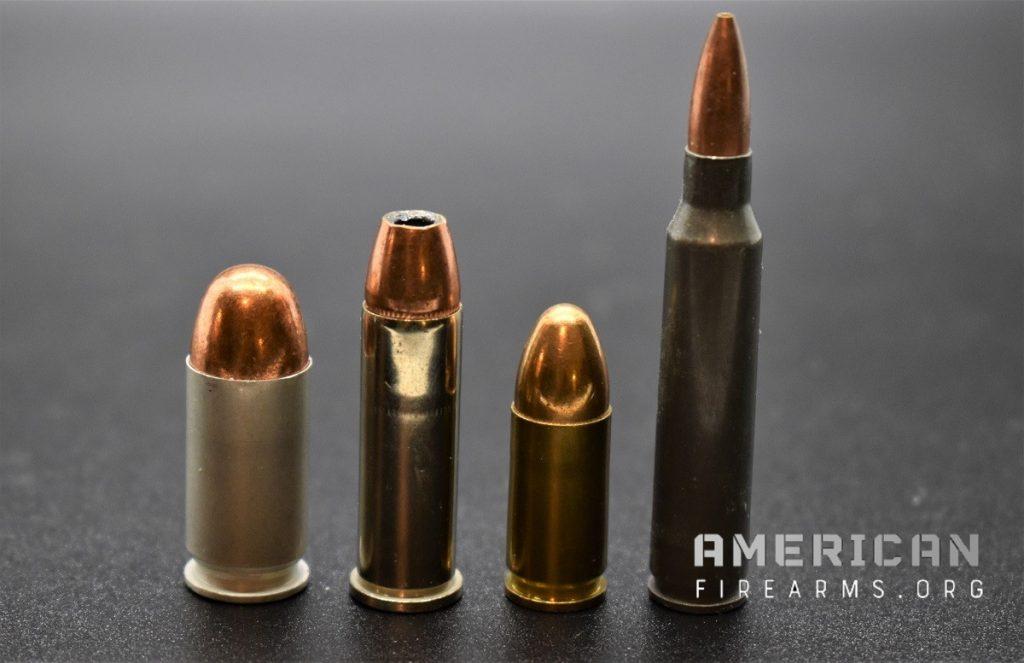
- Case: The container that holds all the other ammunition components together. It’s usually made of brass, steel, copper, paper, or plastic.
- Primer: An explosive chemical compound that ignites the gunpowder when struck by a firing pin. Primer may be placed either in the rim of the case (rim-fire) or in the center of the base of the case (center-fire).
- Gunpowder: A chemical mixture that burns very rapidly and converts to an expanding gas when ignited. Modern smokeless powder will burn slowly when ignited in the open (outside of the case). Black powder is less stable and can be explosive when ignited in the open.
- Projectile: The object(s) expelled from the barrel. A bullet is a lead or copper encased projectile fired through a rifle or handgun barrel. A slug is a lead projectile fired through a shotgun barrel. Shot is a group of lead, steel, tungsten, or bismuth pellets fired through a shotgun barrel.
- Wad: A seal made of paper or plastic separating the powder from the slug or shot in a shot-shell. The wad prevents gas from escaping through the shot and holds the shot together as it passes through the barrel. Also known as a sabot.
Common Features of Firearms
All types of firearms have actions and sights, and they may have safeties or magazines. Features unique to rifles or shotguns are discussed in the following sections. Common features:
- Stock (handle)
- Hammer
- Trigger
- Trigger guard
- Barrel
- Muzzle
- Front sight
- Cylinder in a revolved
- Magazine (in a semi-auto)
- Breech
Firearm Actions
Firearms can be classified by their action type. The action of a firearm is made up of parts that load, unload, fire, and eject the shot-shell or cartridge. Actions are either single shot or repeating styles. Single shot firearms must be reloaded each time the firearm is fired. Repeating firearms have extra cartridges or shot-shells ready in a magazine, cylinder, or barrel tube. We have a deep dive into gun types as well.
Bolt Action: A bolt-action firearm operates like opening and closing a door bolt. The bolt solidly locks into the breech, making it accurate and dependable.
- To open the action, lift the handle up and pull it to the rear.
- If the firearm is loaded, the cartridge or shot-shell will be ejected as you pull the bolt to the rear. To make sure it’s unloaded, visually check both the open action and the magazine for extra cartridges or shot-shells.
- You can store a bolt-action firearm safely by storing the bolt separately from the firearm.
Lever Action: The lever-action firearm has a large metal lever located behind the trigger. This handle usually forms the trigger guard as well.
- To open the action, push the lever downward and forward, which extracts the cartridge case from the chamber and ejects it. If a magazine holds extra cartridges, another is immediately ready to be loaded into the chamber.
- It’s often difficult to tell if a lever-action firearm is loaded. To unload, push the lever downward and forward repeatedly until no more cartridges are ejected. To make sure it’s unloaded, visually check both the chamber and the magazine for additional cartridges.
- Most models also have an exposed hammer, which can be dangerous.
- Always use extra caution to keep your hands away from the trigger while working the lever action.
Pump Action: The pump-action firearm is fast and smooth. It allows the shooter to re-cock the firearm without taking his or her eye off the target. The pump action also is referred to as “slide action” or “trombone action.”
- To open the action, slide the fore-stock to the rear, which extracts the cartridge from the chamber and ejects it. Sliding the fore-stock toward the muzzle closes the action and readies another cartridge for loading. A pump-action firearm will open only after it’s fired or if a release lever is pressed and the fore-stock is pulled to the rear.
- To make sure it’s unloaded, you must visually check both the chamber and the magazine for cartridges.
Semi-Automatic (or Autoloading) Action: As each shot is fired manually, the case of the cartridge or shot-shell is ejected automatically and the chamber is reloaded automatically.
- To open the action, you must pull back the bolt’s operating handle (on a rifle or shotgun) or the slide (on a pistol). Most semi-automatics, when the bolt or slide is pulled back, will lock in the open position if the magazine is empty. If the firearm does not lock open, it means that a cartridge from the magazine has gone into the chamber, making the firearm ready to fire. A few semi-automatics do not lock open and must be held open to check the chamber.
- To unload, first remove the magazine and lock the action open. Then make sure it’s unloaded-visually check the chamber for an additional cartridge or shell.
- When closing the action for loading, pull back to unlock the bolt or slide and then let go, allowing it to travel forward on its own. Do not guide it forward with your hand, because it may not seat properly.
- On a semi-automatic, the trigger must be pulled each time a shot is fired. This makes the semi-automatic different from the fully-automatic firearm, which fires continuously as long as the trigger is held down. The fully-automatic firearm may not be used for hunting or sport shooting.
Break (or Hinge) Action: The break-action firearm operates on the same principle as a door hinge. Simple to load and unload, a hinge action is often chosen as a hunter’s first firearm.
- To open the action, point the barrel(s) at the ground. A release is pressed, and the stock drops downward. This allows the cartridges or shot-shells to eject or to be removed manually if the firearm is loaded.
- Hinge-action firearms have a separate barrel for each shot rather than a magazine. Most models have one or two barrels, but some have up to four.
- Some models also have an exposed hammer(s), which can be dangerous.
Revolving Action: The revolving action takes its name from a revolving cylinder containing a number of cartridge chambers. One chamber at a time lines up with the barrel as the firearm is fired. Revolving cylinders may rotate either clockwise or counter-clockwise, depending on the manufacturer. This type of action is usually found on handguns but may be found on some older rifles. Revolving actions are referred to as either “single action” or “double action.”
- Single Action: Will fire only after the hammer has been cocked manually.
- Double Action: Pulling the trigger both cocks and releases the hammer. A double-action revolver typically also can be hammer-cocked like a single-action revolver.
Sights & Optics
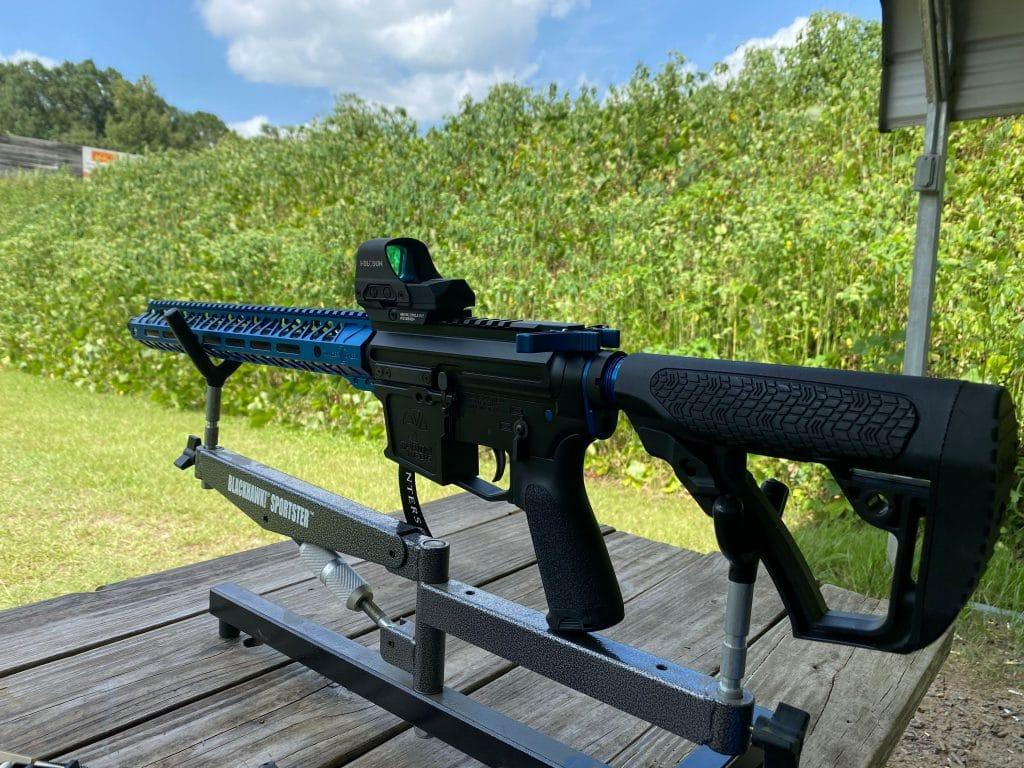
- A sight is a device used to line up the muzzle with the shooter’s eye so that he or she can hit the target. Sights are more critical on a firearm that fires a single projectile (rifle and handgun) than on a firearm that shoots a pattern of shot (shotgun). Shotguns usually have a simple pointing bead. Rifles typically have an open, an aperture (peep), or a telescopic sight. Most handguns have an open sight, although some specialized handguns have a dot or a telescopic sight. Read more about using sights.
- Bead Sight: Simple round bead set into the top of the barrel near the muzzle of a shotgun. Some shotguns have a second, smaller bead about halfway back on the barrel. The shooter uses the shotgun to “point” at and follow a moving object. The bead is used only for a reference as the shotgun is pointed and moved to follow flying or running targets.
- Open Sight: Combination of a bead or post front sight and a notched rear sight. These sights are simple and inexpensive. Open sights allow quick sighting. To aim, you center the top of the bead or post within the notch of the rear sight and line up on the target. Open sights can be fixed or adjustable.
- Aperture (Peep) Sight: Combination of a bead or post front sight and a round hole set on the rifle’s receiver close to the shooter’s eye. To aim, you center the target in the rear peep or aperture sight and then bring the front sight into the center of the hole. An aperture sight is more accurate and adjusted more easily than an open sight.
- Telescopic Sight (Scope): Small telescope mounted on your firearm. A scope gathers light, brightening the image and magnifying the target, and does away with aligning rear and front sights. The aiming device inside the scope is called the “reticule.” To aim, you simply look through the scope and line up the crosshairs, post, or dot with your target. Telescopic sights are the most accurate, which makes them popular for hunting.
- Dot Sight: Small device mounted on your firearm. A dot sight uses electronics or optical fibers to project a glowing dot or other mark on a lens in front of the shooter’s eye. Some dot sights also magnify like telescopic sights.
Safety MechanismsA safety is a device that blocks the action to prevent the firearm from shooting until the safety is released or pushed to the “off” position. The safety is intended to prevent the firearm from being fired accidentally. However, safeties should never be relied on totally to protect against accidental shooting. Safeties are mechanical devices and subject to mechanical failure from wear and other factors, and can fail when least expected. Also, safeties can be bumped from the safe position unknowingly as your firearm is being handled or as it catches on clothing or tree branches. All safeties are located around the receiver of the firearm and are usually easy to spot. Common types of safeties are:
Cross-Bolt Safety: Common on pump and semi-automatic firearms A simple push-button action that blocks the trigger or hammer Usually located at the trigger guard or ahead of the hammer Pivot Safety
- Common on handguns and bolt-action rifles
- A pivoting lever or tab that blocks the trigger or firing pin
- Located on the frame (blocks trigger) or on the bolt or slide (blocks firing pin)
Slide or Tang Safety
- Common on some rifles and break-action shotguns
- A sliding bar or button that blocks the firing action
- Located on the tang (a metal strip behind the receiver) of break-action firearms or on the side of the receiver on some rifles
Half-Cock or Hammer Safety
- Common on firearms with exposed hammers
- Positions the trigger at half-cock, away from the firing pin
- Engaged by placing the trigger at half-cock; some firearms automatically rebound to the half-cock position after the trigger is released
- While not a true safety, it sometimes is described as a mechanical safety device by firearm manufacturers
Differences Between Rifles, Shotguns, and HandgunsThe main differences between rifles, shotguns, and handguns are their barrels and the type of ammunition used.
- The rifle barrel is long and has thick walls with spiraling grooves cut into the bore. The grooved pattern is called rifling.
- The shotgun barrel is long and made of fairly thin steel that is very smooth on the inside to allow the shot and wad to glide down the barrel without friction. It’s thinner than a rifle barrel since it does not have to withstand the same pressure.
- The handgun barrel is much shorter than a rifle or shotgun barrel because the gun is designed to be shot while being held with one or two hands, rather than being placed against the shooter’s shoulder. The bores of most handgun barrels also have a grooved pattern similar to rifles.
A Rifle’s or Handgun’s Caliber
- Caliber is used to describe the size of a rifle or handgun bore and the size of cartridges designed for different bores.
- Caliber is usually measured as the diameter of the bore from land to opposite land and is expressed in hundredths of an inch, thousandths of an inch, or millimeters. For example, a .270-caliber rifle bore measures 270/1000ths of an inch in diameter between the lands and has a larger bore diameter than a .223-caliber rifle. However, there is no standard set for designating caliber. In some cases, the caliber is given as the diameter of the bullet, which is the distance between the grooves.
- Caliber designations sometimes have a second number that has nothing to do with the diameter. For example, the popular .30-30 is a .30-caliber cartridge, but the second number is a holdover from the days when the cartridge took 30 grains of powder. The “06” in .30-06 refers to the year (1906) it became the official ammunition of the U.S. military.
- Every rifle or handgun is designed for a specific cartridge. The ammunition must match the data stamp on the firearm. For example, there are several .30-caliber firearms that use the same bullet size but are designed for different cartridges (the .30-30, .30-06, .308, and the .300 Savage). If you cannot find the caliber stamped on the firearm, take it to a qualified gunsmith.
A Shotgun’s Gauge
Shotguns are classified by gauge, which is a measure related to the diameter of the smooth shotgun bore and the size of the shot-shell designed for that bore.
- Common shotgun gauges are 10 gauge, 12 gauge, 16 gauge, 20 gauge, and 28 gauge. The smaller the gauge number, the larger the shotgun bore. Gauge is determined by the number of lead balls of size equal to the exact diameter of the bore that it takes to weigh one pound. For example, it would take 12 lead balls with the same diameter as a 12-gauge shotgun bore to weigh one pound. Today, however, gauge can be measured much the same way as caliber by measuring the inside bore diameter.
- The .410-caliber shotgun is the only exception to the gauge designation for shotguns. It has an actual bore diameter of 410/1000ths of an inch, which is approximately equivalent to a 67½ gauge.
- Each gauge of shotgun shoots only shells of the same gauge. For example, 12-gauge shells are used only in 12-gauge guns.
- The gauge of a shotgun is usually marked on the rear of the barrel, and the gauge of a shell is marked on the shell as well as on the factory box.
Shotgun Choke and Shot PatternWhen a shot-shell is fired from a shotgun, the pellets leave the barrel and begin to spread or scatter. The farther the pellets travel, the greater the spread of shot. Shotgun barrels have a choke to control the spread or shot pattern. Read more about how to pattern a shotgun.
Choke: The degree of narrowing at the muzzle end of the shotgun barrel.
Shot pattern: The spread of shot pellets after they hit a non-moving target.
The choke of a shotgun acts like the nozzle of a garden hose. As the nozzle is tightened, water shoots out in a long, narrow stream, similar to the full choke on a shotgun. As the nozzle is opened, similar to the cylinder choke on a shotgun, water shoots out in a wider spray.Your distance from the target determines the choke you need. The choke does not alter the shotgun’s power-it just controls how tight or spread out the shot pattern will be at a specific distance.The spread effect of the most common chokes is described below. The choke controls how much shot will hit in a certain area at different ranges.
- Cylinder choke is an un-constricted barrel. The shot pattern spreads quickly.
- Improved Cylinder choke has a slight constriction. It allows the shot pattern to spread fairly quickly. This is a good choice for quail, rabbits, and other upland game.
- Modified choke has moderate constriction. The shot stays together longer, making the pattern denser and more useful at longer ranges. This choke is used often for dove hunting and is the preferred choke when using steel shot to hunt for ducks or geese. There is also an Improved Modified choke that is slightly tighter than Modified.
- Full choke has tight constriction. The shot holds together even longer, so it’s good for squirrels, turkey, and other game shot at 35- to 40-yard ranges. Turkey hunters sometimes use Extra Full or Turkey choke for even denser patterns at long range.
Steel Shot: Steel shot is slightly lighter than lead shot of the same size-reducing its velocity and distance (range). Also, steel shot is harder than lead, so the individual pellets stay round, keeping the pattern tighter. Some hunters use steel shot one or two sizes larger to make up for the difference in weight from lead shot. Others use the same size steel shot or even smaller steel shot to get more shot into their patterns. You should pattern your shotgun with various loads of steel shot before hunting waterfowl with it. Effective pattern density is the key. Maximum pellet counts spread evenly across a 30-inch circle are best. Full chokes generally produce poor patterns with steel shot. The choke of a shotgun determines shot spread only.
Know Your Firearm’s RangeKnowing your firearm’s range is critical to being a safe and responsible hunter. The range tells you at what distances your firearm’s projectile could cause injury or damage to persons, animals, or objects. When hunting, knowing the range also lets you immediately assess when a shot will give a clean kill. Learning to estimate distances and knowing your firearm’s range are important parts of hunting.
Cleaning Your Firearm
Firearms must be cleaned after every use to keep them in top condition. Every hunter should own a complete cleaning kit. Work on a cleared table or bench. Always give cleaning your full attention. Never clean a firearm while doing something else. We have a detailed gun cleaning guide as well.
Follow these basic steps to clean your firearm.
- Point the muzzle in a safe direction, and make sure the gun is unloaded.
- Remove all ammunition from the cleaning bench.
- For the most thorough cleaning, field strip the firearm following the owner’s manual and clean each part separately.
- Follow the instructions in your cleaning kit. If possible, clean the barrel from the breech end, using a bore guide and a cleaning rod holding a bore-brush or patch, wetted with solvent. Pass the brush/patch all the way through the barrel. Repeat several times with fresh patches. You may need a larger brush for the chamber. Use a hand-brush to clean the crevices where powder-residue accumulates. Follow with a dry patch, and finish with a lightly-oiled patch for the barrel and cloth for other parts.A Cleaning Kit Should Include
- A stand to hold the firearm securely in a horizontal position
- Cleaning rods
- Assorted rod tips-brushes, mop tips, slotted tips, jag tips
- Patches appropriate for the caliber or gauge of the firearm
- Gunsmith screwdrivers
- Gun oil
- Solvent
- Gun grease
- Dental mirror
- Toothbrush
- Bore light
- Clean cloths
- Cotton swabs
- Pipe cleaners
Use a flexible “pull-through” cleaning cable when cleaning firearms with lever or semi-automatic actions to prevent dirt, grime, or debris from being pushed into the action area.Use cleaning solvents in a well-ventilated area and only as directed.If cleaning from the muzzle end, use a muzzle protector so you don’t damage the rifling near the muzzle.
Miscellaneous definitions:
- Saturday Night Special: A “suicide special” or “Saturday night special” is a cheap, usually poorly made inexpensive firearm that is considered to be so inaccurate that the only good use for it is to commit suicide.
- MACHINE GUN: Anything that will keep shooting if you hold the trigger back, including guns that have both semi-automatic and full automatic selectors. This includes just the receivers from such a gun, and guns that were welded shut and did not require registration until 1968.
- SAWED OFF (short barreled) SHOTGUN: any shotgun with a barrel less than 18 inches long (measured from the face of the closed breech to the muzzle), or with overall length of less than 26 inches. This includes “hunting shotguns” which have been cut down and also smoothbore guns like the Marble’s Game-Getter and H&R Handy Gun, which were originally made with short barrels.
- SAWED OFF (short barreled) RIFLE: Any rifle with a barrel length of less than 16 inches, with an overall length of less than 26 inches.
- ASSAULT WEAPON/RIFLE: Any rifle or carbine capable of storing and firing multiple rounds in bursts or continuously. Semi-automatic rifles are not considered assault weapons even if they store multiple rounds.
Sign up for our newsletter
Get discounts from top brands and our latest reviews!

